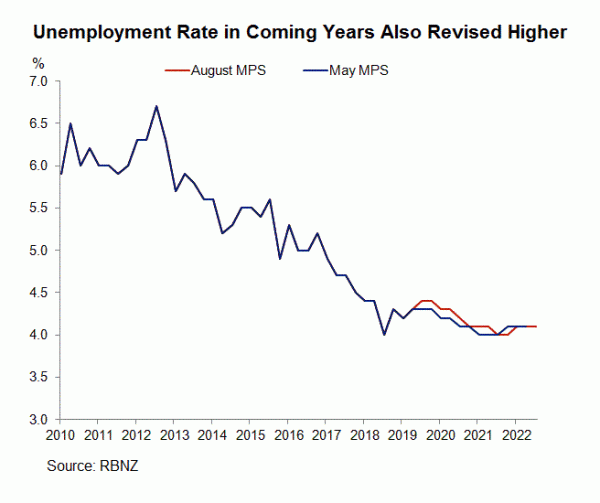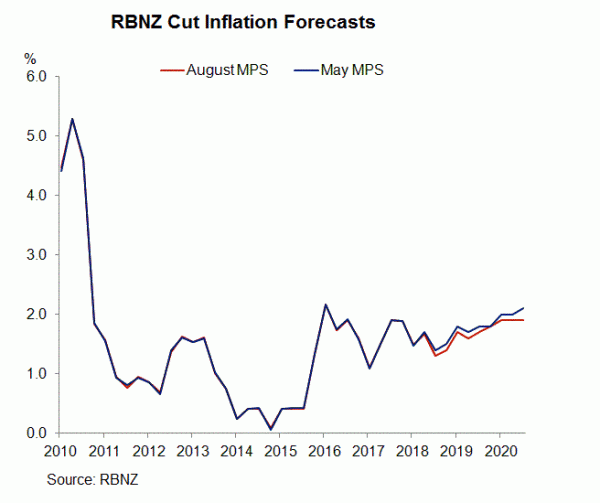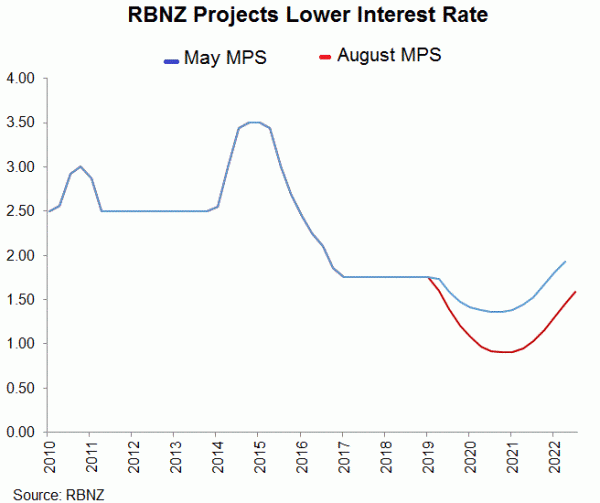RBNZ surprised the market by reducing the OCR, by -50 bps, to 1%. The market had only anticipated a -25 bps cut. The aggressive rate cut is “necessary” to help support employment and inflation in the country as downside risks are growing. Governor Orr also signaled that negative interests are possible as the central bank seeks to boost inflation and the job market. New Zealand dollar slumped as the decision came in much more dovish than expected. We expect further reduction in coming months.
The central bank acknowledged that employment is “around its maximum sustainable level, while inflation remains within our target range but below the 2 percent mid-point”. It noted that “GDP growth has slowed over the past year and growth headwinds are rising”. The members are concerned that employment and inflation would likely ease relative to our targets, if there is no further monetary stimulus. Weakening in global economic activities would affect demand of the country’s goods and services. Meanwhile, world central banks are easing monetary policy to support their economies. These have also increased the urgency of a rate cut by RBNZ as export economy.
Concerning the monetary policy decision, policymakers judged that low interest rates, together with increased government spending, should “support a pick-up in demand over the coming year”. The rate cut of -50 bps demonstrates the “ongoing commitment to ensure inflation increases to the mid-point of the target range, and employment remains around its maximum sustainable level”.
More rate cuts are expected after the aggressive reduction today. At the press conference, Governor Orr signaled that the easing cycle has just started. As he suggested, “it is easily within the realms of possibility that we might have to do negative interest rates”. He added that “probably the single biggest challenge to us is just how low global nominal interest rates are”. Recent escalation of US-China trade war suggests that the hurdle for a deal to be reached has increased. This should intensify the risk of global economic slowdown and trigger central banks to adopt more accommodative monetary policy. Given the rising uncertainty of global economic outlook and further weakness to New Zealand’s activities, we expect RBNZ to announce another rate cut (by -25 bps) before end of the year.















